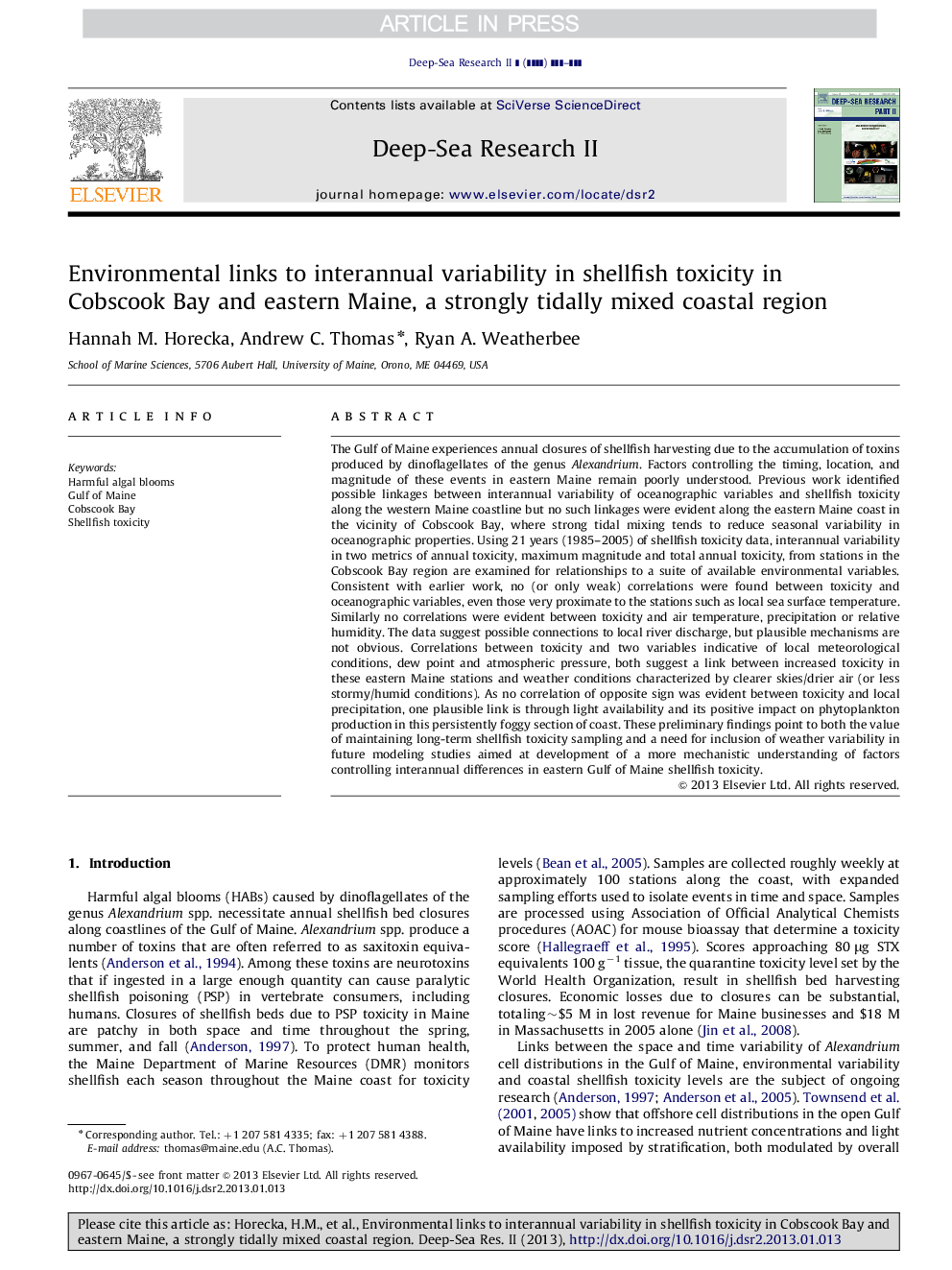| Article ID | Journal | Published Year | Pages | File Type |
|---|---|---|---|---|
| 6384243 | Deep Sea Research Part II: Topical Studies in Oceanography | 2014 | 11 Pages |
Abstract
The Gulf of Maine experiences annual closures of shellfish harvesting due to the accumulation of toxins produced by dinoflagellates of the genus Alexandrium. Factors controlling the timing, location, and magnitude of these events in eastern Maine remain poorly understood. Previous work identified possible linkages between interannual variability of oceanographic variables and shellfish toxicity along the western Maine coastline but no such linkages were evident along the eastern Maine coast in the vicinity of Cobscook Bay, where strong tidal mixing tends to reduce seasonal variability in oceanographic properties. Using 21 years (1985-2005) of shellfish toxicity data, interannual variability in two metrics of annual toxicity, maximum magnitude and total annual toxicity, from stations in the Cobscook Bay region are examined for relationships to a suite of available environmental variables. Consistent with earlier work, no (or only weak) correlations were found between toxicity and oceanographic variables, even those very proximate to the stations such as local sea surface temperature. Similarly no correlations were evident between toxicity and air temperature, precipitation or relative humidity. The data suggest possible connections to local river discharge, but plausible mechanisms are not obvious. Correlations between toxicity and two variables indicative of local meteorological conditions, dew point and atmospheric pressure, both suggest a link between increased toxicity in these eastern Maine stations and weather conditions characterized by clearer skies/drier air (or less stormy/humid conditions). As no correlation of opposite sign was evident between toxicity and local precipitation, one plausible link is through light availability and its positive impact on phytoplankton production in this persistently foggy section of coast. These preliminary findings point to both the value of maintaining long-term shellfish toxicity sampling and a need for inclusion of weather variability in future modeling studies aimed at development of a more mechanistic understanding of factors controlling interannual differences in eastern Gulf of Maine shellfish toxicity.
Related Topics
Physical Sciences and Engineering
Earth and Planetary Sciences
Geology
Authors
Hannah M. Horecka, Andrew C. Thomas, Ryan A. Weatherbee,
